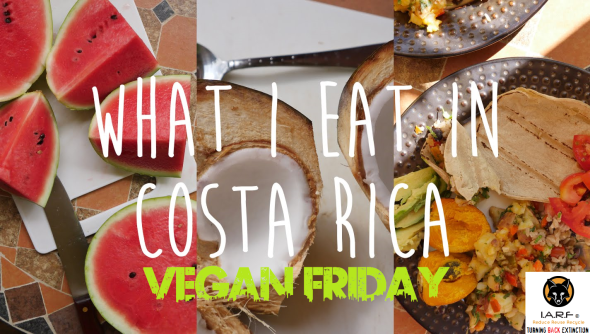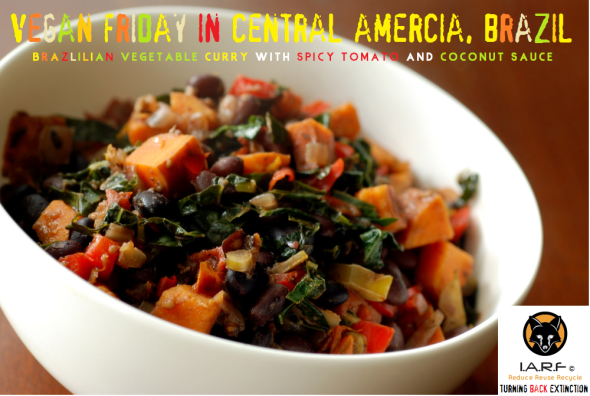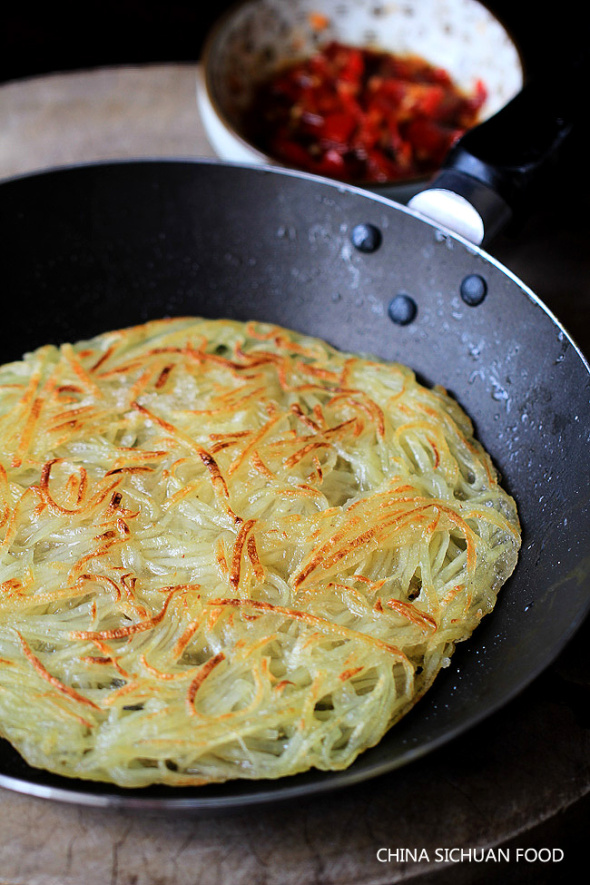BROCCOLI & QUINOA BREAKFAST PATTIES | VEGAN MONDAY #TRYVEGAN ©
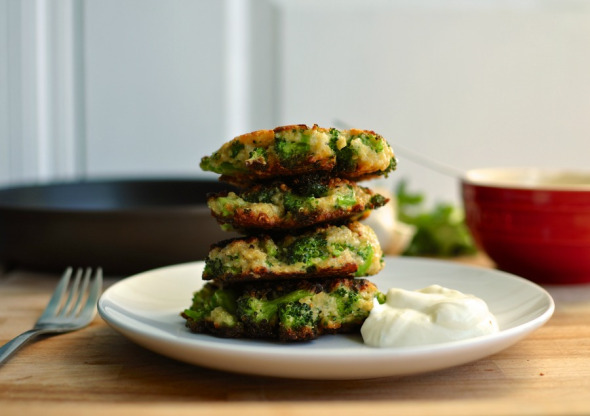
BROCCOLI & QUINOA BREAKFAST PATTIES | VEGAN MONDAY #TRYVEGAN©
Good morning world, and welcome to another #TryVegan recipe. Every Monday and Friday we release on this news site to hundreds and thousands of readers, and many more subscribers (around the globe) a ‘Try Vegan recipe’ Furthermore every day we also release a vegan and/or vegetarian recipe via our main Facebook page hereto: TRY VEGGIE OR VEGAN. Monday and Friday’s vegan recipes are aimed at those that are still wanting to try, but unsure, so why not dedicate two days of the week where you’re meat and dairy free for two of them days?
As we explain every week all recipes are aimed at everyone. We covert recipes from our readers, we share recipes from third parties, and we also make our own recipes. (Stay tuned for the new and tasty French Fries - you’ll be gagging for more). Moreover NO animal died in the making of any recipe that is 100% vegan. Anyway lets crack on.
Broccoli is probably not something you’d imagine ever eating for breakfast. However if that simple yet crucial healthy green vegetable is mixed with other plant based materials and served up with refreshing drinks you’ll never know. Did you know: Broccoli actually helps to ‘fight off cancer cells’ however it doesn’t cure cancer, nor has it ever cured any cancerous illness that I am aware of. If it helps to prevent cancers though from forming, then get it down you fast.
INGREDIENTS:
2 Garlic cloves
1 1/2 tsp Garlic powder
1 handful Green onions
1 cup Mixture of broccoli and carrots
1 1/2 tsp Onion powder
2 tsp Parsley
1 Parsley
Refrigerated
2 Flax eggs
Canned goods
1/2 Vegetable bouillon
2 cups Vegetable broth, low sodium
1 Vegan sour cream
1 cup Quinoa, cooked
1 Salt and pepper
2 tbsp Coconut oil or extra virgin olive oil
1/2 cup Bread crumbs, gluten free
“THAT’S AL YOU NEED”
RECIPE:
Rinse quinoa thoroughly then place in a sauce pan with 2 cups of low sodium vegetable broth and 1/2 vegetable bouillon (optional). Once it reaches a boil, reduce heat, and let simmer for 15 minutes. The quinoa will absorb all the broth. In a large bowl add 1 cup quinoa, shredded broccoli and carrots, flax eggs, bread crumbs, garlic, parsley, 2 tbsp of oil, and salt and pepper to taste, mix until well combined. Drizzle a little coconut oil or extra virgin olive oil over a fry pan. Make palm size balls out of the mixture. Place on fry pan and flatten with a spatula. Cook on both sides 2-3 minutes or until crisp golden brown then place on a plate lined with a paper towel to catch any oil drippings. Do not over saturate with oil. Once cooked enjoy right away and top with vegan sour cream and parsley.
Store in an airtight container, will last in the fridge for up to 5 days, maybe a little longer. Enjoy!
“SOMETHING GOOD TO DRINK MAYBE?”
As with all healthy breakfasts its always good to have a health drink too (with plenty of clear water). While we do like to advocate for non-dairy I myself have noticed among many vegan recipes there is an awful amount of water missing. Water is an incredibly important fluid for humans - and without it you die, simple as. I myself drink over 3.4 liters of water everyday and have done for years. You’ll know when you’re hydrated because your urine will be clear and non-smelly (that’s a good sign).
Dehydration is a leading cause for many diseases, infections, bowel problems and even serious illnesses forming. Furthermore a significantly low water intake can affect your concentration, reduce your alertness, increase irritability, mood swings, and has even been proven in students to lower their grade results. Why though?
Basically your brain needs water, to be precise your body and brain needs at least 2.6 liters of [clear water] every single day. Students trialed with a low water intake were shown to have poor exam results. Students trialed with a good water intake were proven to have near top grades. Water increases your brain function, wards of tiredness, water is so damn good for you - many of us still fail to drink enough. I find that strange.
You know many armed forces combatants that used to present themselves to me with common illnesses I’d allow them to speak then send them off, my simple order was please drink for 48 hours up to and over NOTHING BUT CLEAR WATER. You may find this difficult to digest but your immune system needs water to fend off bugs. Without it you’ll be coming down with bug after bug. Over a decade ago I read a book from an imprisoned general practitioner in Asia. He was a Human Rights Activist. Furthermore he was also a (GP).
Unfortunately he had all of his medicines removed from him, when sent to prison. Within his cell were a number of men that were suffering from serious ulcers and illnesses. Dr Batmanghelidj cleaned the ulcers with water that the guards provided to him, and asked the men to drink water every few hour until the infections cleared up until they were 100% hydrated.
The ulcers cleared up in under one week!. Meanwhile the other men that were presenting themselves to Dr Batmanghelidj were all exhibiting common and some serious illnesses. Dr Batmanghelidj later found out that them men were all being denied water. Once provided with water their symptoms and illnesses went away. You can read Dr Batmanghelidj’s book here and please do purchase it. There are no magical cures for cancers, or other ‘serious illnesses’. However a good intake of water actually increases one good thing in your body - being that of your immune system.
“ONCE YOUR IMMUNE SYSTEM IS IN WORKING ORDER - SO ARE YOU”
“THAT’S BASIC AND STRAIGHT FORWARD MEDICINE WITHOUT THE MED’S”
BREAKFAST HEALTH SHAKE
This recipe was submitted to myself from a wonderful woman that’s actually incredibly healthy. Could it be the water? The shake is called the ‘MEAN GREEN’ and its filled with many antioxidants too.
INGREDIENTS:
1 stick of Celery
Half a Cucumber
1 half of a Lemon
1 handful of Spinach
1 handful of cos Lettuce
1 Pear (skin included), 3-4 rings of pineapple
1 big cup of CLEAR water and just a handful of ice cubes
Add to this a teaspoon of flax seeds
RECIPE:
Take all your prepared ingredients above, add them to a blender, and blitz for about twenty seconds or until the mixture is smooth. Please note when adding ice cubes you may need to blend for a little longer, and shake the blender about a bit depending on the size of the ice cubes.
That’s it folks. Your morning breakfast and drink has been written - now all you need to do is make it, serve, and consume.
Have a nice day and, don’t forget to check the video out below ON WATER!
Dr Jose C. Depre PhD. MEnvSc. BSc(Hons) Botany, PhD(NeuroSci) D.V.M.
Master of Environmental, Botanical & Human Science.
FRENCH TOFU QUICHE | VEGAN VENDREDI #TRYVEGAN.
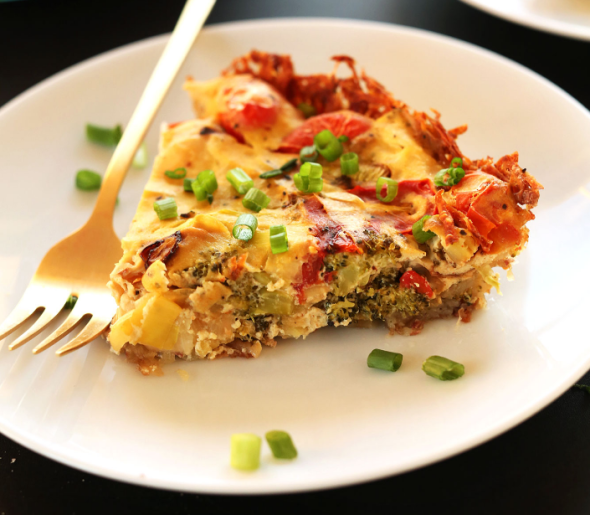
FRENCH TOFU QUICHE | VEGAN FRIDAY #TRYVEGAN
This Friday’s vegan recipe is now out, and what a good way to end the week off with a French tofu quiche, and of course a nice Ampelidae 2012 Marigny-neuf Chardonnay (vegan friendly wine).
For those of you that may be new to our news-site, every Monday and Friday we host to hundreds of thousands of people around the globe a #TryVegan recipe. Meanwhile on our main Facebook page: Vegan and Vegetarian Foods to Promote Healthy Living we host every single day a vegan and/or vegetarian recipe that’s aimed at thousands of readers worldwide.
A few weeks a go we ditched the ‘go vegan’ hashtag as personally we believe this is demanding. We believe in encouraging people to ‘try vegan or vegetarian recipes’ rather than pushing our own beliefs down other peoples throats. We’ve listened to hundreds and thousands of our supporters over the years that dislike this form of education.
Furthermore we’ve also changed many of the recipes that we produce from things such as bowls or plates of just green vegetables - to mouthwatering, and tantalizing recipes for all the family. We’re producing soaps, liquid soaps, aromas, educating and will soon be hosting our live healthy eating channel - that is 100% non-animal harm. How cool is that!?
Okay so lets begin. The following recipe is French, the ingredients are easy to purchase from your local food store, although the wine you may need to order from a specialist or online. Should you experience any problems please do get back to one of the admins via the main link above. Apart from that have a great weekend, and don’t forget to check the video out below for a quick and simple sweet to go with your dinner too.
INGREDIENTS:
CRUST
~3 medium-large potatoes (3 cups grated)
2 Tbsp melted vegan butter (or sub olive oil with varied results)
1/4 tsp sea salt and cracked black pepper
FILLING
12.3 ounces extra firm silken tofu, patted dry
2 Tbsp nutritional yeast
3 Tbsp hummus
Sea salt and cracked black pepper (to taste)
3 1/2 garlic cloves, chopped
2 leeks, thinly sliced and thoroughly cleaned and dried (or sub 1 medium onion, diced)
3/4 cup cherry tomatoes, halved
1 cup chopped broccoli
RECIPE:
Preheat oven to 450 degrees F and lightly spritz a 9.5 inch pie pan with non-stick spray. Grate potatoes and measure out 3 cups. Then transfer to a clean towel and firmly squeeze out excess moisture. Add to pie dish and drizzle with melted vegan butter and 1/4 tsp each salt and pepper. Toss to coat, then use fingers press into the pan and up the sides to form an even layer. Bake for 22-27 minutes or until golden brown all over. Set aside. While crust is baking, prep veggies and garlic and add to a baking sheet. Toss with 2 Tbsp olive oil and a healthy pinch each salt and pepper and toss to coat. Place in the 450 degree oven with the crust. When you take out the crust, lower heat to 400 and continue baking until soft and golden brown (a total of 20-30 minutes). Set aside and lower oven heat to 375 degrees.
To prepare tofu filling, add drained tofu to a food processor with nutritional yeast, hummus, and a heaping 1/4 tsp each sea salt and black pepper. Set aside. Remove veggies from oven, add to a mixing bowl and top with the tofu mixture. Toss to coat, then add to the crust and spread into an even layer. Bake quiche at 375 degrees for a total of 30–40 minutes or until then top appears golden brown and firm. If the crust begins to get too brown, loosely tent the edges with foil. Let cool briefly and then serve with fresh herbs or green onion. Store leftovers loosely covered in the fridge for up to two days. Reheat in the microwave or in a 350 oven.
“Bon appétit”
Don’t forget to serve with a nice vegan French wine. You should today be able to locate a good wine seller that is trading in both vegan and non-vegan wines. Try to shop at a wine merchants, rather than a grocery store as you’ll most likely not locate a single vegan wine at all. Wine merchants are always best. Finally if you’re looking to impress the friends and family or just yourself and partner, then please do check the vegan French sweet out below via the video. Enjoy your weekend.
Dr Jose C. Depre - PhD. MEnvSc. BSc(Hons) Botany, PhD(NeuroSci) D.V.M.
Master of Environmental, Botanical & Human Science.
Vegan Monday | Vegan French Dip Sandwiches | #TryVegan.
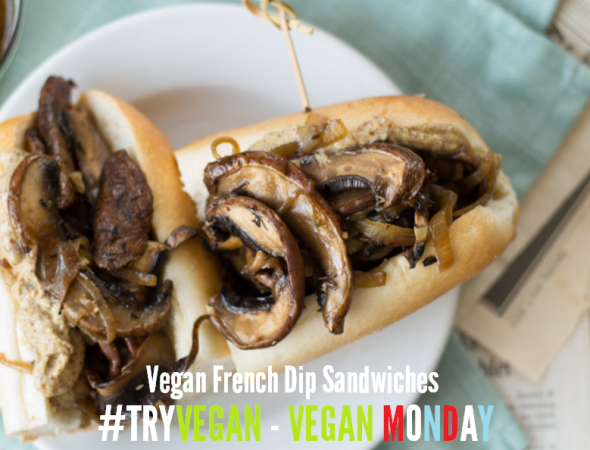
VEGAN FRENCH DIP SANDWICHES
Vegan Lundi
Every Monday and Friday - International Animal Rescue Foundation hosts a #TRYVEGAN recipe. We scan recipes from around the globe, convert them, the pubic send recipes to us to convert, or we simply publish our own recipes or that of third parties. We’ve made a small change to our hash-tag as we believe, in a way the “#GOVEGAN” tag is demanding, so we’ve changed that to #TRYVEGAN. What’s the harm in trying? Every Monday and Friday (two days a week) going completely meat, dairy and other animal products free from your normal diet.
Furthermore we’re not in the habit of publishing trash, such as plates of plain lettuce leaves, carrots, spinage or general boring recipes from which there is no goodness whatsoever, nutrients, fiber, protein, vitamins or minerals. Vegan foods must never be boring, and all you’re doing is removing the animal products and replacing that with a non-animal product. Today we’ve a small French recipe which is actually a rather tasty dish in France known as ‘dip sandwiches’. The meat of course has been removed. Try it, you’ll be amazed at just how tasty and filling this simple, easy to make dish is. I would advise to make your own French bread, alternatively, pick out some granary, gluten free French bread from your local continental farmers market.
INGREDIENTS:
2 tbsps olive oil (divided)
1 onions (medium, sliced into half rings)
2 garlic cloves (minced)
3 portobello caps (about 20 oz. total, cleaned and sliced into thin strips)
1 cup vegetable broth
1 tbsp soy sauce
1 tbsp vegan Worcestershire sauce
1/2 tsp dried thyme
1/4 tsp liquid smoke (optional, but highly recommended)
1/4 tsp black pepper
6 inches sandwich rolls (or baguette sections, sliced open) [Please do try French bread]
horseradish mustard
RECIPE:
Coat the bottom of a large skillet with 1 tablespoon of oil and place over medium-low heat. Add onion and toss a few times to coat with oil. Allow to cook until caramelized, about 20 minutes, flipping occasionally. Add garlic and cook about 2 minutes more. Transfer onions and garlic to a plate. Coat skillet with another tablespoon of oil and raise heat to medium. Add mushroom strips. Avoid overcrowding the skillet. A little overlapping is okay, but work in multiple batches if needed (I needed two), adding a bit of oil between batches if needed. Cook until lightly browned, about 5 minutes. Flip and cook 5 minutes more on opposite sides. Return onions to skillet and add broth, soy sauce, Worchestershire sauce, thyme, liquid smoke and pepper. Bring to a simmer and allow to cook, stirring occasionally, until liquid is reduced by half, about 5 minutes. Slather the insides of rolls with horseradish mustard. Use a slotted spoon to remove onions and mushrooms from skillet, pressing lightly to squeeze out any excess juice. Divide onions and mushrooms into rolls. Pour cooking liquid into a small bowl and serve with sandwiches, for dipping.
“IT REALLY IS THAT SIMPLE”
And if you want a sweet after, and think you’ve got what it takes to be a ‘French cook’ - which is pretty easy. Why not try French Vegan Gingerbread Toast Sticks.
ENJOY AND HAVE A NICE DAY.
Dr Jose C. Depre.
Vegan Monday | Braised Tofu With Mushrooms Taiwanese Vegan Style.
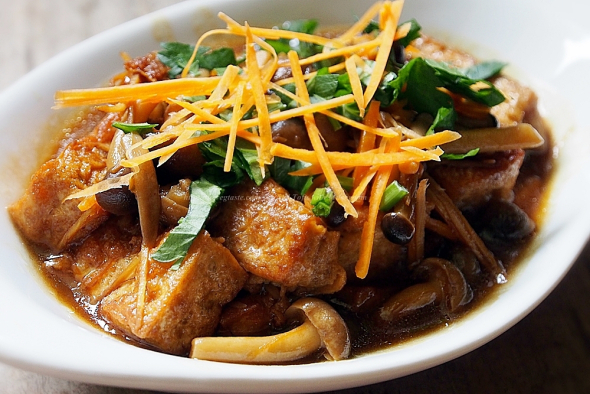
Vegan Monday | Braised Tofu With Mushrooms Taiwanese Vegan Style.
Every Monday and Friday we release on this site a vegan or vegetarian recipe for hundreds of thousands of readers across the globe during the last six months of the year. Furthermore we also release everyday via our main Facebook page a vegan or veggie recipe. Vegan Monday’s and Fridays are aimed at everyone, to encourage our readers twice a week to at least try a meat free or dairy free diet. We’re not forcing our beliefs or diet whatever you wish to call it onto you, however we’re giving you the option to at least try, and why not?
Today’s environment is heating up and fast. The IPCC (Intergovernmental Panel on Climate Change) has predicted a 2-3oc temperature rise globally come 2050-2100, and the main reason for this rise is due to massive methane and carbon pollutants entering the atmosphere. So we believe its in our interests and, yours to at least try to reduce the effects of climate change by opting for one or two days a week (meat and dairy free)?.
Over the past month we have been asked by many people around the world to provide recipes about tofu, or have been submitted meat recipes to change into meatless recipes. This Monday we’re going back to Asia briefly and next week we’re going to get our hands into some real European vegan and veggie recipes.
BRAISED TOFU WITH MUSHROOMS TAIWANESE STYLE
INGREDIENTS:
- 500g fresh tofu
- 3 colours of peppers (half a pepper of each)
- A stick of celery or two
- Wood ear fungus, a handful
- A cup of dried shitake mushrooms
- One chopped spring onion
- A chili
- A thumb of ginger
- Sauce – 2 tbsp soy sauce and 1 tbsp thick soy sauce, some sesame oil, corn flour and a vegetable stock cube, 2 tsp sugar (please check for palm oil, if added please try to leave out)
- One carrot shredded for topping
- A handful of shredded spinach for topping
INSTRUCTIONS:
Soak the dried mushrooms and wood ear fungus overnight in a cup of water (keep the water for the gravy/sauce).
Cut the tofu into small/medium triangles. Chop up the rest of the ingredients to your liking. In a small bowl make the sauce with the 2 soy sauces and the stock cube, the dried mushroom soaked water and use cornflour to thicken and 2 tsp of sugar. (Please leave the sugar out if catering for diabetics, or children).
Now quick fry all your peppers and celery, for about 20 seconds in hot shallow oil. In the hot pan pour out the oil and add in some sesame oil, just about 2 tbsp. Put the tofu pieces in the hot pan and add a teaspoon of sugar to help the browning. Turn the tofu patiently until all your sides are browned and crispy. For a sugar alternative - please click the link here http://greatist.com/health/30-sugar-substitutes-any-and-every-possible-situation
When it looks ready, push the tofu to the side and add the other vegetables, stir with a bit more oil if you need it, also add a bit of soy sauce. Add the bowl of sauce you made, now braise the whole lot together for a couple of minutes so the sauce flavor combines into the tofu. Optionally add a dash of Worcester sauce and a sprig basil to serve, garnish with grated raw carrot and spinach!
I’m not a fan of tofu, (but that’s my opinion), however when I cooked this last night it was incredibly tasty, and infused with so many different tastes that slowly emit into ones mouth stimulating all the tastes buds, palate and finally brain. The tip is not to overcook these foods, as it will drain the flavor, and you’ll be left with a tasteless goop. You can add like I did sunflower seeds or mixed seeds to the top, and a handful of crushed pistachio. Don’t forget to check the quick and easy recipe out below via the video.
Have a nice day.
Dr Jose C. Depre.
Environmental, Botanical & Human Scientist.
ENJOY
THE LIFE OF A COW | THE HORRIFIC TRUTH ABOUT DAIRY FARMING.
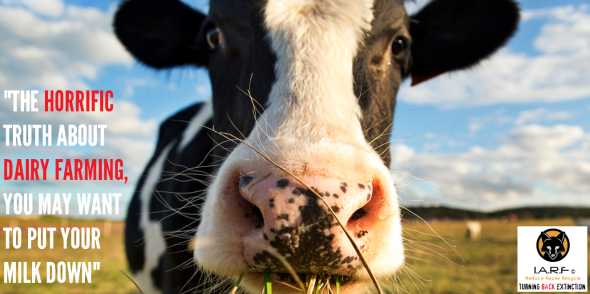
THE HORRIFIC TRUTH ABOUT DAIRY FARMING
Firstly I’d just like to explain, this is the very first article I’ve written in relation to “animal rights”. 100% of my articles are based on nothing but conservation and environmentalism. However I cannot any-longer ignore this side of animal welfare or rights; finally there is only one person that inspired me to write this article, and from listening to that individual, reading and the viewing footage which that individual sent to me. It has led me to investigate this side of animal welfare and agriculture more.
The dairy industry is horrific, something that many people are unaware of, or are aware yet chose to ignore the sadistic industry, because after all its just an animal. I think that’s the depressing side of things, when people chose to believe that an animal is a mere commodity, nothing more and nothing less. I have been a “vegetarian and vegan” now for well over thirty years, unfortunately my main weakness was milk. It was only back in September (2015) that I eventually soon after started to decrease my milk consumption. Today milk is no longer part of my diet, so I guess I’m 100% vegan, in reality there is no such thing as 100% veganism.
GLOBAL MILK PRODUCTION:
There are over 264 million dairy cows worldwide, producing nearly 600 million tonnes of milk every year (source FAOstat). The global average for milk production is approximately 2,200 litres per cow (source FAOstat 2012). That’s a lot of cows, moreover that’s a staggering amount of abuse too. The largest producer of milk is the USA producing over 87 million tonnes per annum (source FAOstat 2012). India has the greatest number of dairy cows in the world with over 40 million cows. The Americas produce 29% of the globes milk, Asia comes in at 21%, Europe 42%, Oceania 4%, and Africa 4%. I find it rather interesting that Africa being “one of the largest continents” on the planet produces only 4% of the globes milk production.
TOP TEN DAIRY COMPANIES:
Despite so many articles, videos and accounts of dairy trade abuse - many companies out there sill insist on being part of this horrifying trade. The top ten companies that “in my opinion fuel this slavery and nefarious trade” are listed hereto: Nestle (29.50 billion USD), Danone (14.79 billion USD), Lactalis (12.68 billion USD), FrieslandCampina (11.17 billion USD), Fonterra (10.20 billion USD), Dean Foods (9.74 billion USD), Arla Foods (8.64 billion USD), Dairy Farmers of America (8.10 billion USD), Kraft Foods (6.79 billion USD), and finally Unilever (6.38 billion USD). All ten international renowned companies are household names, especially Nestle of which its products are sold in literally ever country around the globe from chocolate bars, milk, dried milk and other confectionery.
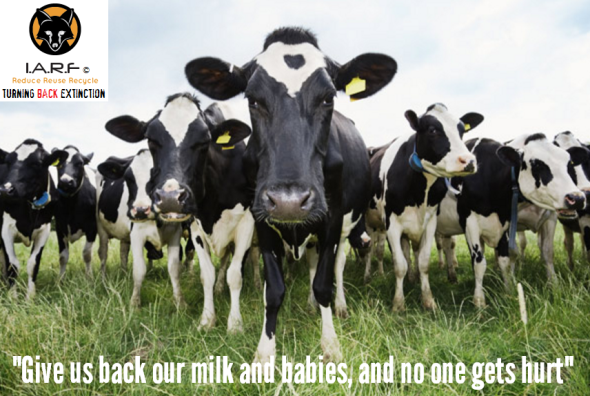
HOW MANY PEOPLE DRINK MILK?:
The global average of whole milk consumption in 2007 was 50kg/capita/yr, the average for cheese was 2.84kg/capita/yr and for butter was 1.32kg/capita/yr (Source: FAOstat). So that kind of (in a mathematical perspective) equates to a staggering amount of milk consumption globally. White people are the biggest milk consumers at some 27.9%, black people 5.2%, and finally Hispanic 9.9%. In all throughout the world, there are more than six billion consumers of milk and dairy products. Over 750 million people live within dairy farming households. Source: http://www.fao.org/docrep/012/i1522e/i1522e00.pdf
That’s a staggering amount of cows that are bred at quite a young age just to produce milk, cheese, butter and other dairy products. Furthermore many people around the world are actually allergic to anything that is “dairy”, some know they are lactose intolerant, while others don’t know and put it down to stomach problems, Irritable Bowel Syndrome, or just gastroenteritis. Overall, about 75 percent of the world’s population, including 25 percent of those in the U.S., lose their lactase enzymes after weaning. The recognition of this fact has resulted in an important change in terminology: Those who could not digest milk were once called “lactose intolerant” or “lactase deficient.”
Virtually all infants and young children have the lactase enzymes that split lactose into glucose and galactose, which can then be absorbed into the bloodstream. Prior to the mid-1960s, most American health professionals believed that these enzymes were present in nearly all adults as well. When researchers tested various ethnic groups for their ability to digest lactose, however, their findings proved otherwise. Approximately 70 percent of African Americans, 90 percent of Asian Americans, 53 percent of Mexican Americans, and 74 percent of Native Americans were lactose intolerant.
1-4 Studies showed that a substantial reduction in lactase activity is also common among those whose ancestry is African, Asian, Native American, Arab, Jewish, Hispanic, Italian, French or Greek. So if you find that after drinking a milky cup of coffee or tea in the morning results in you soon after needing to pass a stool on the toilet, or you suffer gurgling (medical term: borborygmus) within the small and large intestine - its quite likely you are suffering from lactose intolerance. Source: http://www.pcrm.org/health/diets/vegdiets/what-is-lactose-intolerance
HOW IS MILK HARVESTED?:
Many people I’ve questioned over the course of the past six months actually believe both male and female cows produce milk, live happily within a field, and after milking - the cows are kindly (humanely) returned back to the field and all is well. Unfortunately that’s not the case. Ask yourself this question, which is the only species of human that can produce milk, and how is that possible? The answer is simple, the female human is the only human that can produce milk, and for that to happen she must either agree to sexual intercourse to become pregnant, or she is raped, impregnated, and then as explained above - milk is produced nearing the last trimesters of gestation.
So no, male cows (known as bulls) don’t produce milk, only female cows (like female humans) produce milk. A cow is pregnant for approximately 283 days, and produces only one calf. That calf if they are female cannot produce milk at a young age neither - of which they’re known as a “heifer”. Now you’re probably wondering how on earth is it possible for the farming community to continue to keep up with “dairy demand” when a staggering near (six billion consume milk and dairy products, and a single cow is pregnant for 283 days?).
Well being as blunt as I possibly can, and to the point; once the female cow gives birth, the cow is then impregnated again, however farmers cannot wait for a bull to mate with the female cow in most cases, (and for the cow to produce milk once a year she must be pregnant every year too). You may now want to stop eating, and drinking your milky cup of coffee. There are various methods used to “extract sperm from the male bull”. Back in the old days farmers used take the bulls three foot long penises and then masturbate them into a sterile collection jar. Sounds lovely doesn’t it? No it doesn’t!. Source: http://www.independent.co.uk/news/uk/home-news/bulls-semen-10-things-you-didnt-know-1336150.html
Today various collection methods vary in regards to sperm extraction. Some bulls mount frames covered in cowskin and ejaculate into rubber tubes with bottles on the end. Some mount other males, known as “teasers”, only to be interrupted at the crucial moment (which arrives quickly and is over even more quickly) by a man with a rubber tube. Other bulls mount and inseminate females in the natural way, and the semen is then extracted from the cow. When necessary, the bull can be excited artificially, with the help of an aerosol spray which reproduces the smell of a cow on heat. So I guess in a way (this could be seen as sexual abuse of a cow just to provide you with milk, butter, cheese and other dairy products). However its not if we look at it on a “scientific and veterinary medical angle”. I personally though wouldn’t want some strange man jacking me off, would you? …Anyway
…Meanwhile once the farmer or “cow boys” have collected enough semen, this semen is soon injected into the female cow soon after the female cow has given birth. The cow isn’t even given a rest, or a time to recover from her childbirth ordeal. Furthermore the most upsetting part of this trade is when the little one is soon taken away from mother to be killed for the production of “veal”. What you may have believed were happy humanely treated milking cows wandering lazily within the local field - are actually raped cows, used as sex and milk production machines [aka slaves], every year they are forced to breed by humans to provide to some 6 billion dairy consumers - milk!.
Farmers will keep some of the young depending on how many males and females they are holding on their farm. If they are female and some of the elder female cows are nearing their life-cycle of milk production, the elder female cows will be slaughtered, and fed back into the human food chain. So what you may be eating (in the way of healthy and fresh beef) is actually, and mostly overworked milking cows that have been repeatedly raped, or to be scientifically correct “artificially inseminated time again”. Did the cow agree though, did she want to be impregnated again?
Well, think about it, if you was a mother would you want your partner jacking off over you, inside of you or fuc**** you again just to produce more children and milk? No, I didn’t think so. Anyway as explained some of the female and male babies will be kept to keep milk production continuing, unfortunately many will be slaughtered soon after birth, often leaving mother in distress, crying and pining for her little one; and in some rather distressing images I’ve seen on farms, I’ve witnessed mothers chasing after her baby as the farmer abducts her young. That sight almost finished my career within Environmental Science and animal welfare. Furthermore the sight of a maternal cow pining and watching her new born being taking away (for veal production) is pretty traumatic for the cow too.
WHAT HAPPENS TO THE BABY COW:
Firstly veal is the “meat of baby cows” produced mostly from overworked milking cows. Every-year when mother gives birth after 280 days she has to go through the whole ordeal of watching her little one (either male or female) abducted from her (just to provide you with either veal or milk). Pretty horrifying don’t you think? Veal cows are seen as the “surplus of the milking and dairy farming industry”. Baby will be taken away from her mother either a few hours after birth, or a few days after. Source: http://www.whitelies.org.uk/animal-welfare/fate-calves I’m not going to lie, or propagate some melodramatic nonsense, on some farms veal cows will be kept with their mother for longer than a week, that’s about it. The longer the veal cow stays with mother, the more the milk production cycle will be interrupted.
So as your drinking your milk you may want to remember your milk or dairy product has a further added death to it. A baby calf, abducted from the mother, and held within a veal crate (as seen in the image below).
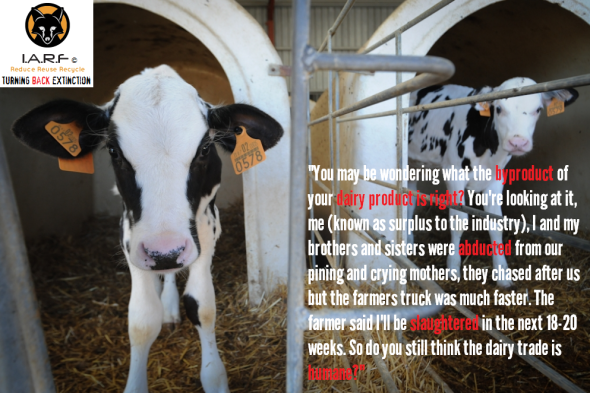
Now as an Environmental, Botanical and Human Scientist I tend to keep away from over exaggerated facts and conspiracies, and the reason I do that is because within Environmental and Human Science if we don’t explain the facts as they are, or provide incorrect and non-factual data, once the public find out otherwise - we’ll rarely be believed or taken seriously again. The image above is 100% factual. Veal cows are seen as (surplus to the dairy and/or farming industry). Veal cows as explained (which you can read in the link above too), are removed from their mothers some hours, a few days or a week after mother has given birth.
From there the veal cows are then held in a veal crate or pen as seen in the image above. In some countries cruel and inhumane veal crates have been outlawed, unfortunately in other countries, they are still being used. You may want to check with your local agricultural ministry in your own county to see if crates are banned or not. The above image is a veal pen, from which baby who’ll be wanting to know where mummy is, and wanting to live like a baby cow will unfortunately be slaughtered for veal meat come 18-20 weeks.
This can be stopped though. How? Quit consuming dairy products, after all 75% of the globes population are actually “lactose intolerance”. Why hurt yourself more, mother and the wee baby? Meanwhile if you’re wondering what a veal crate is, please do watch the video below to understand more on this area of horrific and brutally barbaric agriculture trade just to provide you with milk, cheese, and butter (among other things). The video below originates from a Mercy for Animals undercover investigation in relation to veal farming and the abuse handed out to the little babies. You may find this video upsetting, however it must be shown for you to understand.
WHAT HAPPENS TO ADULT COWS ONCE THEY’VE EXCEEDED THEIR MILK CYCLE?:
To be brutally honest I don’t know what’s more traumatic. Knowing a male bull will be masturbated or excited to produce sperm for insemination and (milk production), a female cow continuously raped every 280 days to produce a new born just for milk to be extracted from the mother for humans; or knowing her wee one is abducted, held within a crate or pen, and killed after 18-20 weeks. There really isn’t a specific traumatic feeling, each and every action is equally as horrifying as one another. The entire dairy industry is sadistic and cruel to the core.
Milk production declines steadily afterwards, until, at about 305 days after calving, the cow is ‘dried off’, and milking ceases. About sixty days later, one year after the birth of her previous calf, a cow will calve again. High production cows are more difficult to breed at a one-year interval.
From THIRTEEN MONTHS (that’s thirteen months) after the female cow has been picked for milk production (and not veal) the primary stages of milking production will begin, meaning that at 13 months the female cow will be artificially inseminated or mated with a bull. The older the cow the poorer milk production is, and lower quality too. Farmers (technically speaking) like their brides young (so to say and excuse the pun).
Domestic cows can live for up to 20 years; however, those raised for dairy rarely live that long, as the average cow is removed from the dairy herd around age four and marketed for beef. So after (four years of being raped time again, and witnessing her young being abducted), four years later she is (after complete exhaustion), killed for meat. So technically and scientifically speaking - when a supermarket advertises fine cuts of beef, healthy beef, or fresh beef - what you may actually be consuming in most cases (as explained above), is in fact overworked milking cows. I often believe when witnessing these adverts on television - its a complete violation of the trades description act.
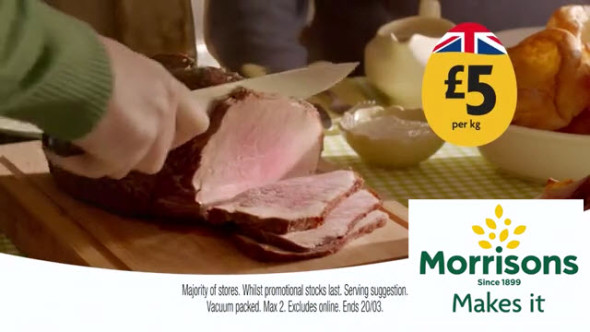
In 2014, approximately 9.5% of the cattle slaughtered in the U.S. were culled dairy cows: cows that can no longer be seen as an economic asset to the dairy farm. These animals may be sold due to reproductive problems or common diseases of milk cows such as mastitis and lameness. Mmm yummy, beef that is filled with diseases, and reproductive problems. But hey, don’t take my word for it. Look up the links too. Source: http://animaldiversity.org/site/accounts/information/Bos_taurus.html Source: http://livestocktrail.illinois.edu/dairynet/paperdisplay.cfm?contentid=354
So that’s basically the life of a dairy cow and her baby; short, overworked, raised in quite abusive and unnatural environments that aren’t projected into the public domain. Often we see images of farmers with happy faces and cows looking incredibly healthy. These images though are what the agricultural and supermarket industry want to project - because it brings in the customer, it sees money parted, products purchased and the longer that trade and false advertising goes on, the longer cows within the dairy, veal and meat industry will be abused moreover.
Its barbaric, horrific, and if the truth was shown within supermarkets and on the television (such as the video below). I can guarantee now that many people would be most certainly put off from buying anything dairy, or eating anything “beef related”. So I question you now: With your cup of milky tea, coffee, your cheese, butter or anything that is dairy related, would you after seeing this video below still consume “dairy or beef products”?.
Watch how the farmer carefully coaxes the little baby away from his mother. Mother is walking in front, while the little day old bay carefully plods along. Motherly and maternal instinct being played out UNTIL. Baby is snatched away. Watch the behavior of mother cow, she tries to save the little one, somewhat alarmed as to why a human is now taking her baby, she follows the farmer wondering where her little one is being taken, she even runs behind the car with little baby in (that is incredibly traumatic and often leaves the cow emotionally distressed for days or weeks on end. Are you still thinking of drinking that milk, or are you going to throw it away and think of a more humane and non-cruel option?).
DO COWS SUFFER FROM PSYCHOLOGICAL TRAUMA WHEN BABY IS REMOVED?:
Many people never realize that ‘animal maternal mothers’ go through the same feelings, and behave the same as ‘human maternal mothers’ do. One only has to view the video above to realize that female cows will behave exactly how human mothers do when their baby is removed, harmed or killed. The scientific and veterinary evidence is there, it proves beyond a doubt that cows suffer exactly the same psychological trauma as human mothers do when they lose their child, or their child is seriously hurt.
Calves are usually separated from their mothers very quickly, sometimes within hours of birth. This is done both to harvest the cow’s milk for human consumption, and also because it’s thought that isolating the calves is safer for them all of which is utter nonsense. If calves are allowed to stay with their mothers after birth, a strong bond develops, weakening slowly as the calf grows older and less dependent on milk, until it is weaned at about eight months old. Abrupt and early weaning, such as occurs on the typical dairy farm, appears to be distressing for both calf and cow, The calves will engage in repetitive crying and become more active, and sometimes you’ll see a decline in their willingness to eat solid food.
As an animal lover, Environmental and Medical Scientist, I find that quite upsetting, in fact it makes me incredibly angry to know that these ungulates are being used, abused and put through emotional and psychological trauma (just to produce milk, veal and meat). Source: http://www.wired.com/2014/06/the-emotional-lives-of-dairy-cows/
Sadly, just like human mothers bond tightly with their newborn babies, so do cows bond with their calves. Mother cows have been reported to bellow for many hours or even days after her calf is taken from her. Author Oliver Sacks, MD discusses a visit that he and Temple Grandin made to a dairy farm: When they arrived, they heard many cows bellowing, causing a very loud and unnerving sound. Temple commented, “They must have separated the calves from the cows this morning,” and indeed, that was exactly the case.
Similarly, Dr John Avizienius, a senior scientific officer at the Farm Animal Department at the RSPCA in Britain, discusses one particular cow that suffered great emotional distress over the separation from her calf: She bellowed for hours, and even after six weeks would hover at the pen door where she had last seen her calf. In a cruel twist of fate, it’s been shown in mammals that multiparous females (those giving birth for the second time or more) have higher levels of oxytocin than primiparous females (those giving birth for the first time.) This means that with each subsequent birth, a mother cow presumably grows more and more bonded to her calves, and it likely becomes more and more emotionally traumatizing for the cow each time a baby calf is taken from her. Do cows suffer psychological trauma when separation takes place? Indeed they do.
THE END OF THE ROAD:
So there you have it, that’s the life of a ‘dairy cow’. Many activists around the globe are trying desperately to end this farming misery, they risk their lives every week trying to stop truck after truck transporting dairy cows to what we call “the end of the road”. If you’re still holding that glass of milk, or thinking of drinking that cup of milky coffee, tea or consuming that dairy product, please do remember that cows don’t live happily within the local fields. The abuse, mental torture and inhumane deliberate acts of abuse often handed down by farm workers is uncalled for, unnecessary, yet all to provide you with a glass of milk, slice of cheese, or knob of butter for your toast or bread Etc.
Four years of rape. four years of emotional distress witnessing baby abducted, and four years of complete misery. Finishing, my last questions are: Do you think this is humane, do you agree that cows and their babies should be treated like this, do you agree that cows should be used as rape and production machines? If the answer is yes, then you’ve clearly not read a single thing within this article. However if the answer is no, then you’re now on the right path helping us and many activists like in the video below to end this horrific trade. The video below depicts that “four year end cycle”, milking cows that have gone through four years of abuse from the age of thirteen months now on their way to slaughter. Source: https://www.facebook.com/electricvegantelevision/
ARE THERE ALTERNATIVE MILKS I CAN CONSUME?:
Indeed there are, in fact not only will you find a wide number of tasty, nutrient and vitamin rich milks, you’ll also notice within ONE DAY after consuming “non dairy milk products”, your bowels beginning to settle down. They’ll be no gurgle, very little bloating, no flatulence, no morning bowel relief, no nausea, and no diarrhoea. When I stopped consuming milk (being the last dairy product I gave up) I will admit that it took a few days to get used to the taste of plant based milks. That was soon overcome though. I tried soy milk first although disliked it, but then that’s me, not you, you may actually like soy milk! What I found with soy milk, is that when adding to coffee the soy milk curdled. I later found though that was due to the temperature of the water, and the amount of soy milk I’d added first.
So I went down to my local hypermarket and purchased a wide range of natural plant based milks which I’ve listed below for your information. You’ll find in drinks such as coffee, or teas that you’ll need to add more plant based milk over that of cows milk. However its not really that much. Once you manage to garner the correct quantities all is good. Below are some of the milks I’ve tried, my preferred milk though is rice milk.
- Rice milk. (good for coffee, tea and smoothies)
- Coconut milk. (excellent for cooking vegetable Asian curries)
- Oat milk.
- Hemp milk.
- Soy milk.
- Almond milk.
- Barley milk.
- Spelt milk.
- Lupin milk.
- Pea milk.
- Cashew milk. (great for an alternative taste to Italian coffees Etc)
- Hazelnut milk.
- Chia milk.
In all there are EIGHTEEN different natural plant based milks (that I know of) that are on the market, furthermore these natural milk products last longer when open and refrigerated than cows milk, and are more easy on the pocket too - because they last longer. All eighteen plant based milks are easy on the tummy (as explained) and excellent at reducing gastrointestinal upsets. No animal is harmed during the processing of these milks, because no animal is involved. You can even grow the plants above that produce these milks in your own garden. Its really as simple as that. Check the video our below.
THE ENVIRONMENT?:
You may not know this, but cows are actually the biggest methane emitter on the planet - all of which contributes to increasing our global air temperature, and increasing climate change. Source: http://www.ipcc-nggip.iges.or.jp/public/2006gl/pdf/4_Volume4/V4_10_Ch10_Livestock.pdf and as I continue to state, please don’t take just my word for it, check the medical, scientific, and environmental scientific links out too.
Agriculture is responsible for an estimated 14 percent of the world’s greenhouse gases. A significant portion of these emissions come from methane, which, in terms of its contribution to global warming, is 23 times more powerful than carbon dioxide. The U.S. Food and Agriculture Organization says that agricultural methane output could increase by 60 percent by 2030 [Source: Times Online]. The world’s 1.5 billion cows and billions of other grazing animals emit dozens of polluting gases, including lots of methane. Two-thirds of all ammonia comes from cows.
Can you now see why I am writing this article, not just to get across to many dairy consumers and beef eaters that cows are treated barbarically. But also to prove (which I have done countless times), that consuming beef, and dairy products is actually, seriously, damaging our environment.
Cows emit a massive amount of methane through belching, with a lesser amount through flatulence. Statistics vary regarding how much methane the average dairy cow expels. Some experts say 100 liters to 200 liters a day (or about 26 gallons to about 53 gallons), while others say it’s up to 500 liters (about 132 gallons) a day. In any case, that’s a lot of methane, an amount comparable to the pollution produced by a car in a day.
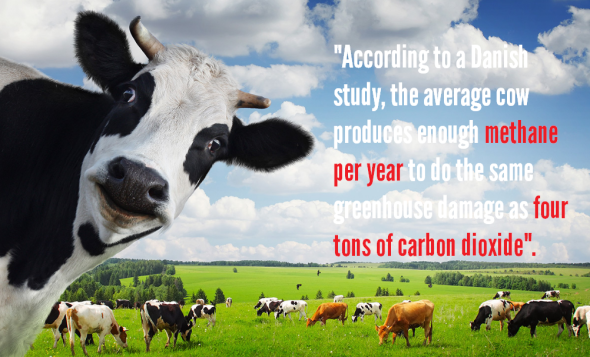
According to a Danish Study conducted back in 2014 for the Intergovernmental Panel on Climate Change cows do emit enough methane per year to do the same damage as FOUR TONS of carbon dioxide. Source: http://www.todayifoundout.com/index.php/2014/04/cow-farts-really-significantly-contribute-global-warming/
At the end of the day I’m just a Botanical, Environmental and Human Scientist with decades of experience within this sector of human, animal and environmental science. I’m not telling you or ordering you what to do, however I am providing to you the facts, of which its down to you whether or not to digest these facts and take action, or to ignore. I do hope that this article is shared far and wide, as well as encouraging many people to make changes to their lifestyle, and to end this so called humane farming of cows - of which is nothing but absolute horrific, nor is it “humane”.
I would just like to correct misinformation here that seems to be going around the animal rights community, I’m not entirely sure why, maybe somethings are done differently in certain countries, however in all farms I have visited, and examined; both “female and male” baby cows are removed from their mother of which as explained above this is called “surplus to the industry”. At times males will be kept if there is a need for further bulls, and at times females will be kept if there is need for fresher milking cows. However if a farmer cannot expand his or her farm or doesn’t require “surplus cows” both females and males will be sold on as veal. Please don’t read and believe everything on the internet, and try to stay focused on “proven and more than academic science”.
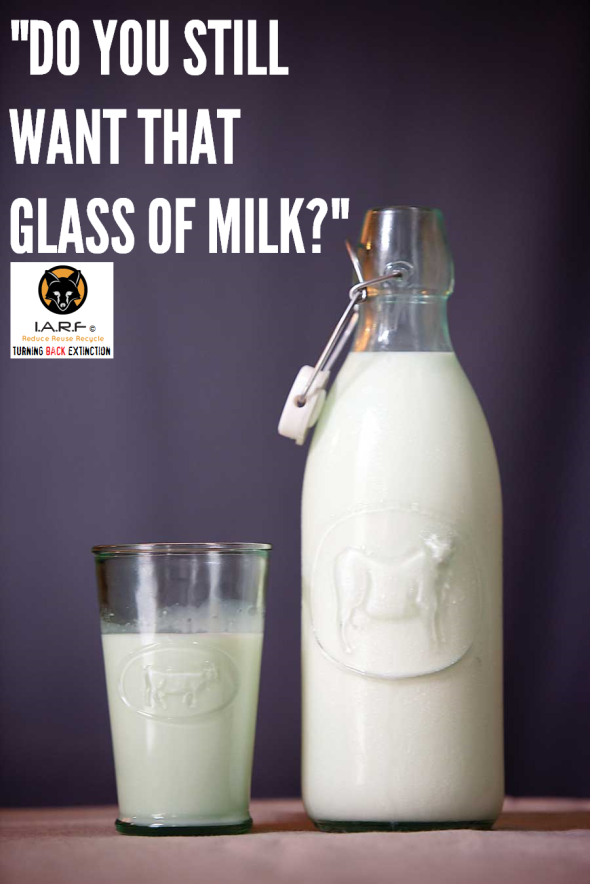
Thank you for reading.
To find our more on “non meat consumption visit our coalition partners site here on Facebook
Dr Jose C. Depre PhD. MEnvSc. BSc(Hons) Botany, PhD(NeuroSci) D.V.M.
Environmental & Human Science
VEGAN FRIDAY | COSTA RICAN STUFFED TORTILLA
VEGAN COSTA RICAN STUFFED TORTILLA
Staying on track with our month long South American vegan and vegetarian Monday’s and Friday’s, we bring to you a beautiful Costa Rican Stuffed Vegan Tortilla. Every week we host a vegan Monday and Friday day for anyone to try. While we understand that most vegans believe (everyday should be a vegan day), its really not that simple. Many people may not want to go vegan, and those that are trying their hardest may not want to go all the way.
However if we can lose them two days; I.e Monday and Friday where no meat or dairy is consumed, then we believe we’re onto a winning track, and you never know, encouragement, education and awareness may eventually lead a consumer to adopt more days. We can only try, and one thing we’ll not practice, or even encourage is pushing our beliefs or diets (or others) down other peoples throats.
That’s just wrong, furthermore market research has shown that when companies consistently push their foods or beliefs onto others obsessively. The consumer, or general Joe in the short run continues their own way of doing things, meanwhile ignoring the big brands, markets or pushy salesperson.
Invite the friends, and family around this Friday, spread the word, and lets make Friday a no meat and dairy day for all, one day, that’s all it is. Monday makes two days. There you go, you are on the road to at least trying, and we for one welcome that and take our hats off to you for at least trying
INGREDIENTS
20 Tortillas
1 lb left-over / fresh vegetables, cooked and shredded (optional)
salt & pepper (low salt)
20 corn tortillas (check for any type of palm oil)
hot pickled banana peppers
Cabbage Salad
2 cups cabbage, shredded
1 cup diced tomato
3 tablespoons fresh coriander, chopped
2 teaspoons lemon juice, fresh
2 teaspoons olive oil (check for palm oil)
salt & pepper (reduced salt)
Cabbage Salad:
Mix all the ingredients together (cabbage, tomato, coriander, salt, pepper, and olive oil). Make this slaw just before serving the tortillas. Place a tablespoon of the shredded vegetables on a warm tortilla, top with the cabbage salad. Top with as many hot peppers as you like.
Roll up & Serve, with or without the shredded vegetables. Hey, don’t forget to follow our >Vegan and Vegetarian Recipe Online Book on Facebook<
ENJOY AND HAVE A NICE DAY..
CHECK THE VIDEO OUT BELOW FOR MORE WONDERFUL IDEAS AND RECIPES.
Dr Jose C. Depre
Environmental & Botanical Scientist.
VEGAN FRIDAY: Central America | Brazil | Brazlilian Vegetable Curry With Spicy Tomato and Coconut Sauce
Brazlilian Vegetable Curry With Spicy Tomato and Coconut Sauce
Brazilian Vegetable Curry with Spicy Tomato and Coconut Sauce can be served with rice, and/or large flat breads for guests or the family to tear-and-share. Furthermore you can also once cooked (freeze the leftovers or the entire cooked meal), for another day. We [strictly advise], that if you reheat rice please do so properly, and always ensure that your rice is reheated only once, and is [piping hot]. If unsure we [highly recommend that you DO NOT reheat rice, but reopen and start a fresh bag of rice]. Rice can be [very dangerous to ones health] if not reheated properly, or if the rice is spoiled then reheated. Those of you that hate tomatoes as I do, can swap the tomatoes and replace them with black beans as seen within the image (above).
RECIPE AND INSTRUCTIONS
SERVES 6
1 butternut squash, peeled and 2 cm dice
2 red onions, roughly chopped
1 aubergine, chopped
2 red peppers, diced
1 (400 g) can chickpeas
2 garlic cloves, crushed
1/2 inch ginger-root, chopped
1 red chili, de-seeded and chopped
400 g chopped tomatoes
200 ml coconut cream
4 tablespoons chopped fresh coriander
3 tablespoons olive oil [PALM OIL FREE]
INSTRUCTIONS
Toss veg in a roasting tin with 2 tbsp of the the oil. Roast at 200C for 40 minutes. Meanwhile begin making the sauce. Put the chili, garlic, ginger and onion in a food processor and process to a rough paste. Heat the remaining oil and fry the onion paste until the onions have softened. Add the tomatoes and simmer for 10 minutes. Add the coconut cream and and cook for another 5 mins, if the sauce becomes too thick, thin with a little water, leave to one side until the veg is ready. When the veg is ready add the veg and the chickpeas to the sauce and heat through. DONE. (SERVE AS IT IS, OR ON A BED OF STEAMED or FRIED PLAIN RICE)… Simple.
From the United Kingdom, to Europe, Africa, and on to Central America. Vegan and vegetarian recipes come in all sorts, shapes and delicacies. We (I.A.R.F) believe its pivotal to cater for all, ensuring that we document not only in a multitude of mixed foreign languages for all to read, but to share local, and international vegan and veggie recipes too. This month is CENTRAL AMERICAN vegan and veggie delights, starting from Brazil, a fine county that I have visited so many times now I am addicted. Fine wine, fine food, people and delicacies.
Please share, and don’t forget to > follow our vegan and vegetarian page hereto on Facebook <
Dr Jose C. Depre.
This recipe is not my own, however I do highly recommend to anyone that is suffering from constipation, lacking vitamins, suppressed immune system, or is suffering from common cold/influenza type symptoms to try.
Vegan Monday: Sudanese Cinnamon Tea
Sudanese Cinnamon Tea
There are so many teas and coffees on the market today its hard to choose which one is good for you. Some tea plantations are grown within habitats that have pushed various species of animal to the brink of extinction. While there are some coffee plantations that state they’re all for the environment, just to later find out they are not. Meanwhile lets be honest, tea is pretty much tea. Some may like it while others hate it, so why not jazz that cuppa up a little with some rather tasty African Sudanese Cinnamon Tea? Its nice, trust me!
My travels all over Africa have always been accompanied with cinnamon sticks and some real Sudan tea leaves, however in this recipe the leaves are English (the best of course - so they say), don’t forget you’ll need tea leaves and NOT tea bags!. I’ve received quite a number of requests on where to locate such herbs, spices, and foods themselves.
Most of the tropical vegan and veggie ingredients can actually be located in your local hypermarket, European, Asian or African wholefood markets. Just Google. These small stalls or markets host a massive range of peculiar ingredients, delicacies and flavors - all of which are mostly meat free. Don’t forget you can also follow us on our main vegan and vegetarian healthy eating Facebook page hereto: VEGAN & VEGETARIAN HEALTHY LIVING.
Ingredients & Recipe
4 cups boiling water
4 teaspoon of loose English tea
4 cinnamon sticks (approx 1/2-inch)
4 lumps of sugar, plus extra (reduce or leave out if required)
sugar
- Place 4 cups of boiling water in a tea pot with the tea & allow to brew for a few minutes then stir.
- Place 1 cinnamon stick & 1 sugar lump in a tea cup & pour the tea slowly over them.
Serve with an additional bowl of sugar lumps for guests to add if they like. (You may also add a cinnamon stick to the tea pot whilst the tea is brewing for a stronger cinnamon flavor).
That’s about as simple as it gets - Sudanese Cinnamon Tea (enjoy), oh, children that hate tea will absolutely enjoy this. Please don’t add milk, traditional Sudanese Tea does not require milk. You may be asking why not add milk?
Over twenty years ago my Grandmother who was a regular visitor to the continent of Africa once gave me [pure black tea] from from tea leaves grown on the continent of Central Africa. The reason for giving me black tea was due to recurring tonsillitis. My Grandmother always stated that drinking black tea would help cure tonsillitis. As a Doctor I now know why this is.
The tannins found in black tea have antibacterial and anti-inflammatory properties which will help to cure tonsillitis very quickly. Wonderful.
Plants containing tannins have astringent, hemostatic, antiseptic and toning properties. The tannins have the property of coagulate proteins and mucosal tissues, by creating an insulating and protective layer that soothes irritation and pain on the skin. I.e the throat! Herbal preparations containing tannins are used for stop local small hemorrhages, sore mouth, bronchitis, burns, scars of the skin, wounds and many others. They are also used to contain diarrhea.
Some people with digestive difficulties may have some intolerance to tannins, so they should be administered with caution in these cases and tannin-containing plants should not be consumed for long periods since they inhibit the absorption of some vitamins and minerals. These properties of precipitating the complex compounds are used in industry for the production of wines, beers, for tanning leather, making dyes and as a mordant in the textile industry. Tannins are considered antioxidants and ‘are alleged’ to prevent the onset of degenerative diseases such as cancer and cardiovascular disease. Please note there is no real hard hitting medical evidence to back tannins and cancer claims up.
Have a nice week.
Dr Jose C. Depre. PhD. MEnvSc. BSc(Hons) Botany, PhD(NeuroSci) D.V.M.
Environmental, Botanical & Human Science
Vegan Friday: Chinese Potato Pancake.
Chinese Potato Pancake
Since 2014 we have been running our vegan and vegetarian (Monday’s and Friday Recipe sharing posts). We run these posts every Monday and Friday and not every day as we don’t believe in pushing such diets, cultures, or way of eating down the general public’s throat. We also believe its the best option for any would-be starter planning on going vegan or vegetarian.
If everyone gave up meat once a week, and then consumed their normal diet during the remainder of the days, it does indeed have a big impact (on you and the planet around us). Once you’ve tried Monday, you may then want to try a non-meat or dairy day on Friday. There is no such thing as can’t, give it a try, one day a week, if you like it then try Friday.
And if you just don’t like it full stop - then simply stop. We’re not going to moan, shout, scream, bully, make you feel guilty, or show you horrific and graphic images of “dead and diseased slaughterhouse animals”, simply because you don’t want to take the vegan or veggie plan up.
That’s just crazy, and bullying, furthermore pressuring someone into doing something that they do not want to do, has shown in market and sociology research that the individual is likely to never return again (should they have that little inkling they may want to give it a try in the future). You are not at liberty whatsoever to view anyone the recipes hereto, or even on our Facebook vegan and vegetarian page here
Think of it like giving up smoking, one gradually reduces day by day, your body becomes used to the gradual withdrawal and eventually if you like it, you move away from the habit, or in this case from meat and dairy products full stop. (Please note that eating meat or consuming dairy is not a habit either) and we’re not under any circumstances going to block you, de-friend you, hate you, or anything other (because you are no different to us). We see that behavior as a little “extreme” if not bordering food/diet racism. We don’t do racism, nor hate. And if you a vegan or veggie behaving in this way >> doors that way, we’ve not time for that nonsense and extreme behavior.
Hence why we’ll continue these meat and dairy free Monday’s and Fridays every week aimed at over 7.9 million supporters internationally on all our platforms worldwide. We will share, copy or include our own recipes. If you have your very own recipe then please feel free to share that with us via contacting the organisation below. Its your body, and your world, do as you see fit, and what you feel suits you.
Ingredients and Instructions
Use a slice to shape the pancake so that they can be uniform in thickness. At the first part of frying, use medium fire so that the pancake can form quickly and then remember to slow your fire, otherwise the pancake might be burnt easily.
2 middle size potato, shredded
1/2 cup of starch (I use sweet potato starch)
1/2 teaspoon salt or as needed
1 pinch of ground black pepper powder
1 teaspoon Chinese five spice powder
Around 1/2 tablespoon vegetable oil
Dips
1 tablespoon Hunan Chopped chili sauce
1 teaspoon light soy sauce
1 tablespoon boiled water or stock
1/2 teaspoon sesame oil
Instructions
Peel the potatoes and cut into thin shreds. You may use a shredding tool. Try to make them similar in size so the cooking time can be similar too.
In a large bowl, add salt, ground black pepper powder, five spice powder and starch. Mix well and set aside for around 5 minutes.
Brush some oil in a pan, fry one side of the pancake over medium fire for around 1 to 2 minutes until shaped and slightly brown. Turn it over and continue frying the second side. Then slow down your fire and turn over the pancake several times to fry the two sides until crispy and brown.
Serve directly or with the dips you want.It can be matched with sweet chili sauce or tomato sauce.
Notes
Decide your dipping sauce firstly and adjust the salt accordingly.
For more recipes check this amazing site out here: http://www.chinasichuanfood.com/ (credited)
“HAVE A NICE DAY”
Vegan Monday: African Sweet Potato Stew.
AFRICAN SWEET POTATO STEW
Every Monday and Friday we normally print a vegan or vegetarian recipe onto our main healthy eating Facebook platform. However as we only have a limited audience of 7.1 million viewers, we’ll be printing every Monday and Friday our vegan and veggie delights onto the speakupforthevoiceless.org server for readers in over 42 countries worldwide. To sign up for free simply click the hyperlink here add you’re email address, and you’ll be sent weekly news on vegan and vegetarian recipes, our endangered species post, and environmental investigations that we are currently working on.
AFRICAN SWEET POTATO STEW RECIPE
A hearty, delicious African stew with peanuts, coconut milk, sweet potatoes and lightly spicy, earthy flavor. Perfect for a cold winter’s night. 100% vegan. Low sodium. Great for kids, and an excellent stew for all our European, American and Candian friends and supporters that are in the midst of a heavy winter.
INGREDIENTS
SERVES 6 , 6 very hearty servings of stew
2 tablespoons oil
1 tablespoon curry powder
2 medium onions
2 carrots
4 celery ribs
2 teaspoons garlic, minced
2 lbs large sweet potatoes (about 2 large ones)
2 cups low sodium vegetable broth
1 (28 ounce) can whole tomatoes
1 teaspoon salt, divided
1/4 teaspoon black pepper
1/4 teaspoon cayenne
1/2 cup chunky peanut butter
3 tablespoons peanuts, roasted
1/2 cup light coconut milk
DIRECTIONS
Prepare in advance your sweet potatoes by peeling them and chopping them into chunks. Dice your carrots, celery and onion. Drain and quarter your tomatoes from the can.
Heat 2 tablespoons of peanut oil in a large Dutch oven or stockpot over medium-high heat. Add curry powder and cook, stirring constantly for 1 minute. Add onions, carrots and celery and cook, stirring occasionally, for 2 minutes. Add garlic and cook for 1 more minute. Stir in sweet potatoes, broth and tomatoes, and bring soup to a boil. Simmer, covered, 20 to 30 minutes.
Season with 1/2 teaspoon salt and 1/4 teaspoon black pepper, peanuts, cayenne, peanut butter, and coconut milk to the soup, stirring to combine. Bring mixture to a simmer and cook for 20 minutes.
Serve hot; makes 6 very hearty servings.
Enjoy…

